Bias
Why Culture Is Medicine at the Universal Hip Hop Museum
The healing power of purpose and creativity
Posted February 26, 2016
Malcolm X said that racism is a “cancer.” Decades later, research supports his assertion; not only does racism and discrimination result in tangible disparities for its victims, but also it destroys an individual’s very health and self-concept.
At the core of the harmful practice of racism and discrimination is a simple message: some people don’t matter.
If racism is a cancer, Hip Hop has proven to be a potent cure. Hip Hop was born as a response to the discrimination and poverty facing African-Americans in the late ’70s. And Hip Hop’s culture is based on the idea and spiritual orientation that in spite of adversity and oppression, everyone is capable of finding a sense of purpose to do something special, creative and innovative.
That spirit has propelled Hip Hop to become what has been described as “the most important youth culture on the planet.” This claim could be based solely on the popularity and influence of Hip Hop on music, with Hip Hop having been called “the most important musical development in the last 50 years.”
But it’s much more — Hip Hop has influenced everything — business, fashion, politics, entertainment and education. And that influence is seen in Russell Simmons’ successful entrepreneurial ventures; in LL Cool J’s hosting of the Grammy Awards and Kendrick Lamar’s giving the awards show’s most forceful performance; in Beyoncé’s homage to the Black Panthers during the Super Bowl; or in Killer Mike’s voice in national politics on the importance of income inequality. The list is endless.
The spirit, purpose and influence of Hip Hop is undeniable.
And in recognition of the power of Hip Hop culture to heal and inspire, Hip Hop pioneers and entrepreneurs, including Afrika Bambaataa, Kurtis Blow, Rocky Bucano, Dr. Tanji Gilliam, Paradise Gray, Marq Cli-N-Tel Hawkins, Cynthia Horner, KRS-One, Ndaba Mandela, Dale Restighini, Shawn “Easy LG” Thomas and Tyrone Williams, are saying it’s time that Hip Hop has a place to preserve, protect and advance its spirit and message.
It’s time for the Universal Hip Hop Museum (UHHM).
To understand Hip Hop’s power to inspire, one must examine the social context from which Hip Hop arose in the late ‘70s and early ‘80s. African-Americans and Hispanics faced discrimination in areas of employment, housing, education and health care, among others. For example, one study conducted in the city of Boston in 1981 found that African-Americans were shown 30 percent fewer available housing options than white people.
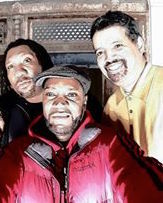
Rocky Bucano, co-founder of Strong City Records and co-founder of the UHHM, explained how this broader societal trend manifested in poverty and inadequate housing in the South Bronx, arguably the birthplace of Hip Hop. “In the ’70s, it was a very dark time in the history of New York City. The economy was probably at its lowest point. There were so many opportunities for abuse of the system,” he said.
“Landlords were trying to increase their property values and found out that it was difficult to do so because their buildings were in underserved communities, and they couldn’t raise the rent because people couldn’t afford it,” Bucano said. “So what did they do? They hired people to burn down their buildings so they could collect insurance money.”
The discrimination facing African-Americans also manifested in terms of images portrayed on television at the time. African-Americans and other minority groups have long been portrayed in popular media in negative, stereotypical and harmful ways.
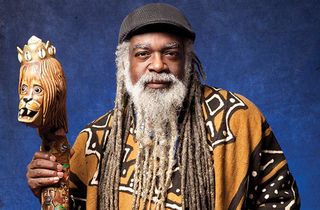
Paradise Gray, a member of Blackwatch Movement and X Clan, remembers growing up feeling that he could not relate to the characters portrayed on television. “Nothing represented me. Nothing represented who I was. Everything was so far away and distant,” he said. “Everything was so ‘Brady Bunch’ or ‘Leave it to Beaver.’ When you’re seven years old, all of your superheroes look like Superman.”
Worse, the characters who Gray felt most resembled him were not treated with respect. “The cartoons you watched were Looney Tunes, and Daffy Duck was the closest one that looked like you. And he always got mistreated and disrespected. You had Bugs Bunny making fun of natives,” Gray explained. “You had Tarzan, and he was the king, and he’d beat up whole tribes of black people. Those were the days that black people basically played butlers and pimps and ‘hoes’ or somebody who was a violent criminal. So the image of black people in the media was really twisted back then. Only thing that looked like me was ‘Good Times’ and ‘The Jeffersons.’
“And they didn’t look like they were having good times to me.”
The confluence of discrimination in the form of reduced available resources and negative images can be conceptualized as a stressor that undermines physical health and emotional well-being. A robust and emerging body of research suggests that the stressful nature of discrimination may increase risk factors for health issues such as cardiovascular disease, including stress and smoking.
As an example, in one study of 27 black college students, participants were shown anger-provoking non-racist situations, racist situations and race-neutral situations. Results showed that participants’ blood pressure significantly increased while watching the racist situations, but not the anger-provoking situations, even though both evoked anger.
Moreover, evidence suggests that racial discrimination can result in damage to mental health and self-concept. For example, one review of 134 studies across a range of minority groups found that perceived discrimination was associated with higher levels of depression and lower self-esteem. As an example, research shows that exposing American Indian children to racist stereotypes such as the Cleveland Indians’ “Chief Wahoo” character can result in lower self-esteem, decreased mood and lack of connection to one’s culture.

Kurtis Blow, whose song “The Breaks” was the first-ever rap recording to achieve gold-record status (sales topping 500,000 units), recalled how living in poverty affected his self-concept. “Living in poverty is like living in oppression,” he said. “You are the bottom of the totem pole — an inferiority complex that’s waiting to happen.”
The combination of racial discrimination and its consequences (e.g., poverty) can have a very specific, pernicious effect — undermining an individual’s sense of purpose and future. As an example, one study of 204 lower socioeconomic status African-American women examined the relation of perceived discrimination to “existential well-being,” defined as life satisfaction and sense of purpose. Results showed that higher levels of racial discrimination predicted lower levels of existential well-being.
Having a lack of purpose matters. Positive psychology theorists suggest that one of the keys to thriving is the ability to find a “meaningful” or “purposeful” life, in which one uses his or her strengths in the service of something “greater” than oneself.
And not having a sense of purpose has tangible negative health consequences. For example, one research study followed more than 6,000 people over the course of 14 years and found that those who died were less likely to have had a sense of purpose. Another study followed 900 older adults over seven years and found that having a lower sense of purpose resulted in higher risk for Alzheimer’s disease and cognitive decline.
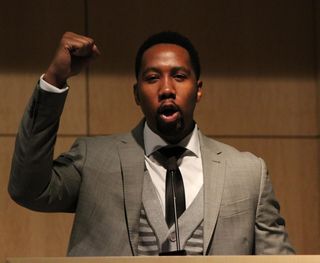
Ndaba Mandela, grandson of South African human rights leader Nelson Mandela and the co-founder of Africa Rising Foundation, explained how racial discrimination can undermine one’s sense of purpose. “Hip Hop came from a particular time and era in human development, when people were truly being ignored because of their race and standard of living … ,” he told me. “They lose themselves. They lose their sense of belonging and sense of purpose. And once somebody loses their sense of purpose, they become detached.”
Bucano sees the loss of purpose manifest in urban youths’ not seeing themselves in the future and not having “big dreams.” In his recent visit to a South Bronx school (where his son teaches), he asked the students what they think about when they “dream big.” He was stunned by the answers.
“Dreaming is your ability to see yourself in the future. They couldn’t answer it. One kid said, ‘I want to pass classes.’ Another said, ‘Get a GED,’ Bucano explained. “Those are big dreams? That’s not a big dream. A big dream is owning a mansion, having five cars, becoming president, becoming a doctor and curing cancer,” Bucano said.
“And the kids are like, ‘I didn’t know you could dream like that.’”
One of the most important ways that an individual can develop a sense of purpose and “dream big” is to connect with a healthy, positive culture that inspires creativity and growth. To understand the potential power of Hip Hop to heal, we must consider that Hip Hop includes 1.) a purposeful and inspirational ideology; 2.) a community; and 3.) a specific set of pro-social behaviors that can be pursued in a purposeful manner.
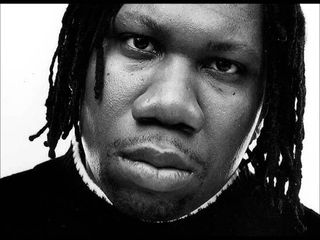
KRS-One, founder of Boogie Down Productions and the Stop the Violence movement, explained the ideology of Hip Hop and how it can provide that sense of purpose. Part of the strength of Hip Hop’s spirit and message of empowerment is owing to Hip Hop’s roots in the civil rights movement. KRS-One told me, “Hip Hop is in line with Martin R. Delaney, Marcus Garvey, Malcolm X, Dr. Martin Luther King Jr., Huey P. Newton, Stokeley Carmichael (aka Kwame Toure), and all those that sought, and still seek, the end of neo-colonial rule, racism and imperialism.”
Afrika Bambaataa, founder of the Universal Zulu Nation, explained how the spirit of the civil rights movement manifested specifically in the forms of music that influenced Hip Hop. “The movement comes off the back of the civil rights and human rights movements that were happening in the ’60s and early ’70s,” he said. “It branched off from the different sounds of music that was being played at that time,” Bambaataa said.
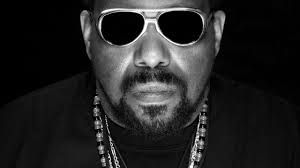
“Whether it was R&B and soul, reggae or calypso, salsa, jazz,” Bambaataa said. “Woodstock, Country Joe MacDonald, what are we fighting for, talking about Vietnam. Sly and the Family Stone telling you to stand, we’re everyday people, it’s a family affair, thank you for letting me be myself, you can make it if you try. James Brown telling you to get up, get into it, get involved. Curtis Mayfield telling you back to the world. The poetry of Muhammad Ali, Sonia Sanchez, the Last Poets, the Watch Prophets, Gil Scott Heron.”
Also, the spirit and message of the civil rights movement manifested in the specific ideology of Hip Hop. “Hip Hop is an idea. It is the pursuit of one’s authentic being through the arts. It is not a physical thing; it is an attitude — even an aptitude,” KRS-One said. “And whatever you truly believe Hip Hop is, shall become your perception, your natural ability and your reality. Hip Hop is an extension of our very being, and so the study of Hip Hop is the study of self-expression leading to the study of one’s true self.
“You must have an opinion about yourself, some kind of meaning to yourself, a purpose, if you are really going to learn anything or develop into that which you desire to be,” he added. “Self-management and self-control are the keys to advanced knowledge, and both are difficult to learn without a sense of your own cultural identity.”
Blow concurs: “Hip Hop is the antithesis to the inferiority complex. It says that you have this talent. There’s something inside of you – whether it’s art, the clothes we wear, the food we eat, the way we walk, the way we talk, the way we speak to each other, the way we communicate, the music, the way we dance to the music. It is all part of our culture.
“The buildings are burning down on one side of the street, but on the other side, the kids are trying to put something together,” Blow said. “It was like, ‘We live in all this dirt, but we’re not dirt.’”
Research supports the importance of a strong cultural identity on well-being. For example, one study of 459 participants examined whether ethnic identity could serve as a buffer between depression and suicidality among African-American and European-American college students.
Results showed that African-American, but not European-American, college students who were less attached to their ethnic group reported a stronger relation between depression and suicidal ideation than those who endorsed a stronger attachment to their group. Other work demonstrates that cultural resources such as racial pride minimize the negative psychological distress caused by racism.
Coupled with its ideology, Hip Hop also offers a strong community and social support that youth can connect with and rely on. There is a long history of research demonstrating that social support, including connection to one’s community, is associated with improved health and well-being. Not only does social support feel good directly, but it also may buffer the effects of stress on health
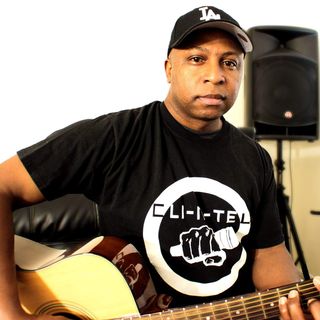
Marq Hawkins, also known as Cli-N-Tel, a member of the World Class Wreckin Cru, which featured a young Dr. Dre, explained how it allowed him and others the chance to specifically move away from the drugs and gangs that were prevalent in his Los Angeles community. “If it wasn’t for fans on the street, family, friends, people connecting with this art form, and having those elements working together — breaking, rapping, aerosol artists, deejays, knowledge — if it wasn’t for all of that, we wouldn’t be talking right now. It makes it more real to people. They can really experience it and live it,” he said.
The sense of community gave Hawkins a sense of purpose. “Getting involved in Hip Hop, it gave me a sense of self, an identity, a sense of pride in who I was because I was able to connect with people,” Hawkins said, “It means a lot, especially when you don’t have a lot. It gives you some purpose.”
What was particularly unique and powerful about the Hip Hop community was that people — even the stars — were accessible. While there were role models in music at the time, urban youth felt that these role models were too remote and unattainable. By having the Hip Hop stars be the very same people with whom someone could talk and see every day, the ability to “dream big” became a real possibility.
Gray explained, “If you listen to the names, Afrika Bambaataa, Grandmaster Flash, Grand Wizard Theodore — they were like superheroes. And they were totally accessible. You could see them walking down the street. Now, there was something that you could relate to. And it wasn’t so inaccessible that you couldn’t do it. It wasn’t a spectator sport. It was participatory. You didn’t have to be the best rapper to be in the cypher. You didn’t have to be the best break-dancer to be respected.”
Moreover, Hip Hop felt representative and inclusive of urban youth. “Hip Hop was entertainment that represented who we were. It spoke in the same language that we spoke. It dressed in the same clothing that we wore,” Gray said.
It could perhaps be enough for a culture to have a strong ideology and sense of community to instill a sense of purpose and promote well-being. But Hip Hop also offered a specific series of healthy and creative behaviors in which people could participate: “The Five Elements”, which comprise emceeing, deejaying, b-boying, graffiti art and knowledge. Any one of these elements could provide a lifetime of direction and purpose.
An emcee or “master of ceremonies” is someone who informs, uplifts and controls the crowd, usually with rapping. In order to be successful as an emcee, it was critical to understand and explore various forms of verbal and written self-expression. And research has shown that while suppressing emotions such as sadness or anxiety can actually worsen these negative experiences, expressing emotions through activities such as writing and speaking about one’s feelings can improve mood and reduce stress responses.
“Emceeing, rapping is communication on steroids. It’s the epitome of communication,” Blow said.
Hawkins described how emceeing not only improves communication skills, but inspires emcees to become interested in related forms of literature. His assertion is consistent with research suggesting that youth involvement in artistic activities such as emceeing encourages broader educational interest. Hawkins described how a teacher who discovered his interest in rapping encouraged him to explore other forms of poetry.
“She gave me a book of the romantic poets — Byron, Keats,” he said. “And she told me to read it because I was struggling with how to write rhymes. And it opened my mind to a whole different style, a different purpose for writing. And as I started to get into those folks, my rhymes got better because of that influence. It made me a better Hip Hop artist. It expands my worldview.”
Just like emceeing, deejaying was a form of artistic expression that involved choosing, creating and managing beats and music. To understand the potential benefits of deejaying, we must consider the overwhelming evidence that listening to or participating in music in general has therapeutic value. For example, studies demonstrate that listening to or playing music can improve symptoms of depression, anxiety and chronic pain. Research has even shown that adding music therapy to treatment-as-usual for people who suffer from schizophrenia mitigates symptoms and improves social functioning.

And deejaying could help youth develop skills in the important and marketable area of technology. Tanji Gilliam, founder of Oil House Productions, thinks that the potential positive psychological effects of deejaying reflect the broader utilitarian ethos. “It’s born out of utility, it’s born out of poverty,” Gilliam said. “Early deejays needed a way to put food on their kids’ table the next day or to get a Metro card in order to get uptown to their job every day, or to pay their rent, those that were old enough.”
For Shawn “Easy LG” Thomas, host of Sirius XM’s “Backspin” radio show, deejaying created a professional path for him to producing. “I’m able to work, go on the road, and support my family,” he said.
Just as music has been shown to improve well-being, visual arts such as grafitti art not only had the potential to beautify a neighborhood, but has also been linked to improved psychological health, including stress reduction. “Graffiti was a way of writing your name on the walls and making the place more beautiful,” said Blow. “I remember a time when the trains had been old and gray and dilapidated. They had become run-down. And so the kids started painting these enormous murals on the train. And it was incredible to see.”
Moreover, it was an opportunity to assert positive identity. “As a graffiti artist, you would sit in high-rise apartments looking at the trains, waiting for your name to pass by,” Bucano said. “And once you saw your name, it’s like, “That’s me. I did that. That’s my creativity.”
Another healthy and creative Hip Hop behavior is “b-boying.” Physical activity, such as b-boying, body-popping or break-dancing has been shown to be associated with improved physical and mental health. As an example, one study of 469 older adults without dementia examined prospectively the effects of specific leisure activities on preventing dementia. Results showed that dancing was associated with a reduced risk of future dementia.
And make no mistake, one needed to be in good shape to be effective at b-boying. Gray explained, “If you wanted to be a good break-dancer, you had to be physically fit. You had to practice. You had to work hard at it.”
The fifth element of Hip Hop is knowledge. This is where the UHHM comes in: to provide a living, breathing place where people can learn about the spirit, community and elements of Hip Hop. There is substantial evidence that visiting museums can improve health and well-being. But the UHHM is not just a feel-good place; it is a dynamic entity designed to further knowledge, to promote Hip Hop culture and to promote a sense of purpose.
“The Universal Hip Hop Museum is unique in the sense that Hip Hop is organic. It is alive, and all live things are subject to changes, adaptations and modifications,” said KRS-One. “This is why the Universal Hip Hop Museum exists. It exists first so that the founders, pioneers, artists and architects of original Hip Hop may finally find an intellectual resting place for their years of hard work. And secondly, it is here that all of Hip Hop’s competing ideas, cultural understandings and conflicting histories can be synthesized into one harmonious body of transferrable knowledge.”
“The Universal Hip Hop Museum is not a mausoleum. It’s not where Hip Hop goes to die,” agreed Gray. “It’s where Hip Hop goes to live. To present Hip Hop as what was, what is, and what shall be. It is a message of peace. You are connected to Hip Hop. We respect what you do. There is space for you.”

Tyrone “Fly Ty” Williams, founder of Cold Chillin’ Records and producer of the Mr. Magic show (the first Hip Hop radio show ever), sees the importance of UHHM capturing the dynamic change of Hip Hop. He told me, “It keeps changing. You can’t have everything old. Change makes it better. We have to show where it came from and where it’s going.”
This includes learning about the difficulties that faced Hip Hop pioneers, and how they overcame adversity. “Everyone has dreams and aspirations. But if you want to be successful, it has to be through education. If you study history, look at who has been successful and study those steps, you, too, will achieve success,” Blow said. “The underlying theme and purpose of the Universal Hip Hop Museum is to do just that. It lets young people know that you, too, can be successful. By learning about the real true history, you can enable success and your future.”
Thomas concurs, “If you want to get into Hip Hop, be successful, you have to study what it is. The museum is basically a school — an educational device — where you can learn the mistakes, how these things were done — the good, the bad, the ugly, so you won’t go down that same path.”
Hawkins described examples of barriers that faced Hip Hop artists. “Being a pioneer, having to go through the struggles and the obstacles that we went through. One hundred percent of all record labels said this stuff is just a fad, it won’t last. So nobody believed in it,” Hawkins explained. “Having radio stations continuously turn down your stuff, having to go to every single record store and go to the back of the trunk and walk in. Just going through that struggle and becoming entrepreneurs and executives, at a time when people were looking at this art form and saying, ‘This is not going to last anyway. Why waste our time?’ to it evolving into one of the biggest genres in the world. People could experience that at the museum.”
Williams explained that the Hip Hop community had the task of teaching Hip Hop culture to the world without immediate financial reward. “When you’re trying to build something, the people that are the pioneers never benefit financially,” he said. “Our whole goal initially was to gain acceptance of our music. The rest of the country was not used to a deejay. The audience would see a deejay, and they would say, ‘They’re playing a record! They’re lip syncing!’ We had to teach the audience what rap was. We had to teach every marketplace.”
Make no mistake about it — the value of hard work will be a central message at UHHM. And research shows that people who make social investments in work, relationships and community may develop personality traits that are associated with long-term health and well-being. For example, studies suggest that people who have social investments develop higher levels of conscientiousness. This conscientiousness appears to be associated with improved health behaviors and well-being, as well as increased longevity.
Hawkins said, “One of the things you realize that when you get involved as an artist is that it’s a business. It’s a brand. You now have responsibility, deadlines, opportunities, and things that you have to do if you want to be sustainable as an artist. The shift in the ’90s was that artists realized that I can monetize what I’m doing, my lifestyle. But there are certain things I can’t do, places I can’t go.”
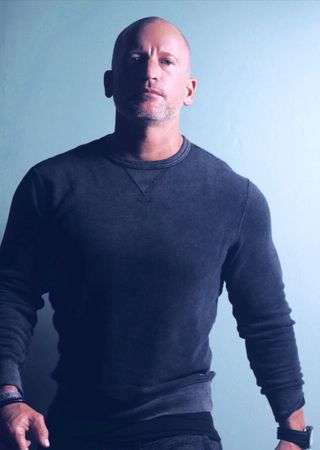
Dale “Rage” Restighini, founder of Raging Nation Films, explained: “You have to have thick skin, passion, relentlessness. You’ve got to be willing to not sleep. You’ve got to be willing to go farther and longer than the next person. I know a lot of talented people that are great and could be great, but if you’re not willing to work as hard as the next person … they’re the ones who are going to get the work. The really talented person who’s sitting in their room waiting to get discovered by the world — it’s not going to happen.”
Furthermore, the UHHM will help people see how Hip Hop culture can translate into personal and professional success. Gilliam explained, “We have to create something that actually trains young people to have sustainable careers. And so that’s how we’re marrying what we are doing with Hip Hop preservation with technology and what it means to start utilizing those things — for all employable adults to gain information in the way of technology education and music-video education in order so that they can have competitive careers. We’re thinking really strongly and really concretely about ways in which we can build a museum mission that creates software developers, that teaches young people how to code.”
The skills of Hip Hop are wanted. KRS-One explained, “Regardless of what you may think about Hip Hop, its cultural elements are still in high demand around the world. Rapping, deejaying, graffiti-writing, breaking, beat-boxing, urban fashion, urban knowledge and Hip Hop’s history are all in high demand around the world.”
Bucano feels that even youth who don’t pursue a career in Hip Hop will see that being successful in Hip Hop can translate into success in the job market. “For someone who’s been very successful in Hip Hop, someone would want to hire them for their marketing department or a creative department because the people who come from Hip Hop have a knack for looking at the world differently — outside-the-box thinkers. Kids who set trends and are ahead of the curve — those are the kind of people that you want to hire, because you want your company to be a leader. The more successful you are in Hip Hop, the more your leadership skills are fine tuned.”
So there it is. Hip Hop culture, born of the type of oppression and discrimination that can destroy physical and emotional well-being and rob someone of their sense of purpose, has provided a cultural path to regain one’s identity and purpose. It’s a potent medicine and its message is universal - for anyone who has felt that their path in life has been blocked or even for people who want to just enjoy themselves and improve their life.
Hip Hop and UHHM offers a place for everyone.
“Hip Hop may have started with young African-American and Latino kids in the city, but it is now a global culture,” Bucano explained. “You can go to any corner of the world and go to a cool Hip Hop party. Hip Hop is a global culture that is embraced by everyone.”
The people involved in the UHHM are calling out to everyone to learn about and join Hip Hop culture. “It’s calling for everybody on this great planet to show how Hip Hop brought people together,” Bambaataa said. “And as we traveled, it reached the human race. Don’t be scared to speak to each other. We all live here on this planet.”
And while Hip Hop culture has already benefited so many people and changed the world in so many ways, make no mistake – there is still work to be done. Discrimination of all kinds still exists. As an example, evidence shows racial disparity in the “War on Drugs” where African-Americans comprise 14% of drug users in this country but are 37% of those arrested for drug offenses. And the lack of racial diversity of nominees for the 2016 Oscars is seen by many to reflect how the cultural playing field is still not level.

Cynthia Horner, Editor-in-Chief of Hip Hop Weekly, sums up the defiant spirit of Hip Hop and UHHM to continue to provide inspiration and hope in the face of any adversity:
“Who needs the Oscars to document our history when we can have the Universal Hip Hop Museum which will be a timeless, priceless slice of history which can be viewed around the world?”
Michael Friedman, Ph.D., is a clinical psychologist in Manhattan and a member of EHE International’s Medical Advisory Board. Follow Dr. Friedman on Twitter @DrMikeFriedman and EHE @EHEintl.




